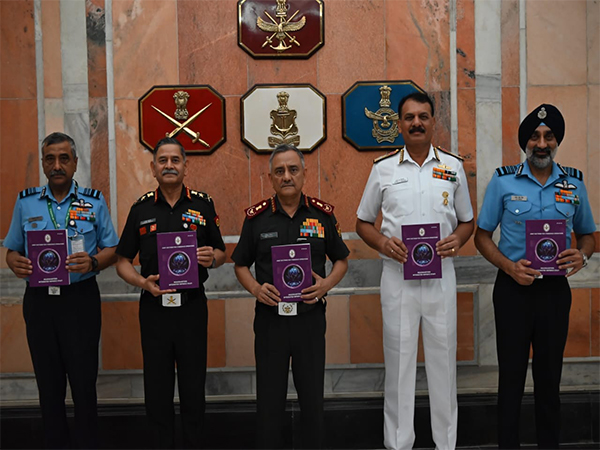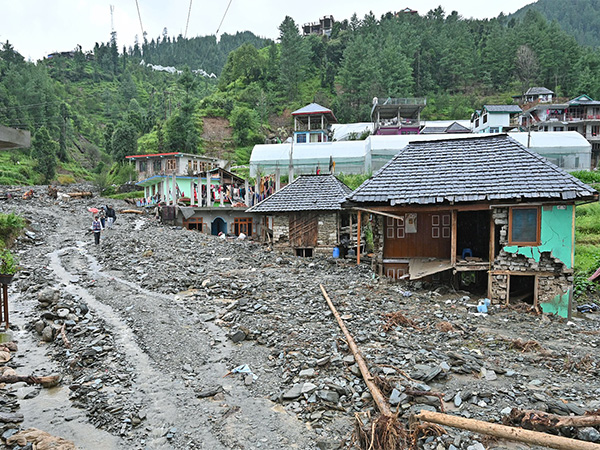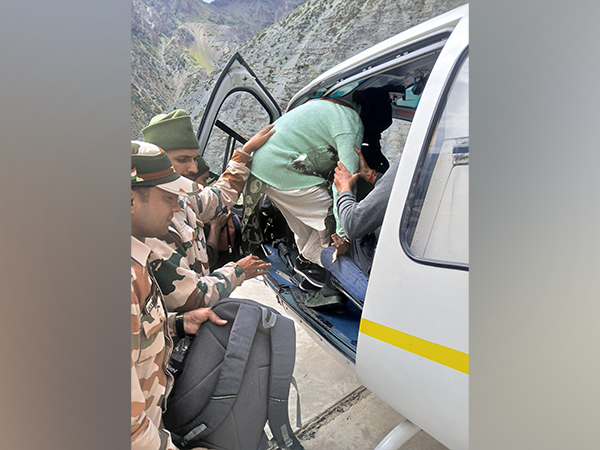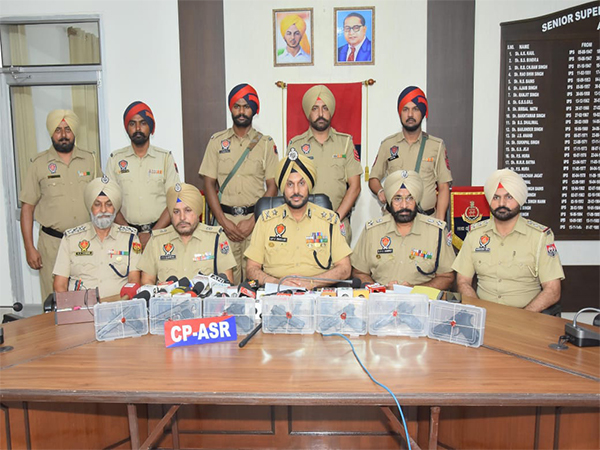
CDS Anil Chauhan releases declassified versions of Joint Doctrines for 'Cyberspace', 'Amphibious' Operations
Aug 07, 2025
New Delhi [India], August 7 : Chief of Defence Staff (CDS) General Anil Chauhan and Secretary, Department of Military Affairs, formally released the declassified versions of the Joint Doctrines for Cyberspace Operations and Amphibious Operations during the Chiefs of Staff Committee meeting in New Delhi on Thursday.
The declassification of these doctrines underscores India's commitment to enhance visibility, accessibility and wider dissemination of joint war-fighting concepts.
The Joint Doctrine for Cyberspace Operations outlines a unified approach to defend national cyberspace interests, integrating offensive and defensive cyber capabilities and enabling synchronised operations across the three Services. It emphasises threat-informed planning, resilience building, real-time intelligence integration and development of joint cyber capabilities.
The Joint Doctrine for Amphibious Operations, which are operations carried out over water and land, defines the framework for planning and executing amphibious operations by integrating maritime, air and land forces. It stresses interoperability, rapid response capability and joint force application to influence operations ashore.
A Defence Ministry release said the CDS has initiated development of numerous new doctrines/primers covering contemporary as well as niche areas of war-fighting such as Military Space Operations, Special Forces Operations, Airborne/Heliborne Operations, Integrated Logistics, Multi Domain Operations.
These doctrines will provide stakeholders and policy makers with a common lexicon and guidelines for effective planning and smooth execution of joint military operations.
Joint Doctrine for Amphibious Operations mentions the importance of Amphibious operations which necessitate 'Jointness and Integration' among the three services with seamless coordination and synergy.
"The maritime outlook of a nation is shaped by the growth of population, industry, infrastructure and politico-economic power along the coast and the ensuing dependence on the seas for national growth and prosperity. It is a central determinant of a nation's maritime interests and strategy. The key drivers of India's maritime outlook and its strategic interests in the IOR include its unique and advantageous geography and the need for sustained economic growth," the document said.
"Economic growth is enabled through economic exploitation of its maritime zones, economic activities related to the maritime domain, including at ports, coastal infrastructure, shipping, fishing, sea borne trade, offshore energy assets, undersea pipelines and cables, offshore power generation, seabed resources and marine genetic resources. A dynamic geo-strategic environment, the need to ensure safety and security of its Sea Lines of Communications (SLOCs) and the security of Indian interests overseas (including Indian diaspora), are also key elements of Indian strategic interests in the IOR," it added.
The document said this synergy must begin at the apex level and go down till various components of the ATF (Amphibious Task Force) conducting these operations. Restructuring of the Armed Forces, currently being examined, envisages creation of joint structures for execution of Multi Domain Operations (MDO).
"These joint structures will bring in efficiency while planning and executing complex MDO like amphibious operations," the document mentioned.
It said the key drivers of India's maritime outlook and its strategic interests in the IOR include its unique and advantageous geography and the need for sustained economic growth.
"Economic growth is enabled through economic exploitation of its maritime zones, economic activities related to the maritime domain, including at ports, coastal infrastructure, shipping, fishing, sea borne trade, offshore energy assets, undersea pipelines and cables, offshore power generation, seabed resources and marine genetic resources," the document said.
Noting that combat support is as "critical and crucial as the conduct itself," the doctrine called for a streamlined flow of intelligence, sustained surveillance and reconnaissance, structured fire support, seamless communications, coordinated Air Defence (AD) support and calibrated operational logistics.
"Amphibious operations are one of the most complex military operations involving comprehensive joint planning and meticulous execution. Technological advancements in contemporary warfighting have led to increased battlefield transparency and the ability to strike beyond visual ranges, making large scale amphibious operations even more complex and difficult to conduct," CDS Chauhan wrote in the foreword of the doctrine.
"Notwithstanding the complexities in conduct of amphibious operations, possession of amphibious capability remains a significant tool for deterrence. Well planned and seamlessly executed amphibious operations can have telling effects on outcomes of campaigns," he added.
The CDS said that in addition to times of conflict, during peacetime, amphibious forces play an important part in conduct of evacuation operations from island territories or friendly foreign countries and for Humanitarian Aid and Disaster Relief operations.
Joint Doctrine for Cyberspace Operations underlines the "absolute necessity of achieving self-reliance in terms of information exchange, integration of capabilities, joint training and development of mission-orientated cyber tool-chains," to ensure a robust cyber ecosystem in the Armed Forces.
Cyberspace, being a field which has permeated almost all facets of life, and emerging as an important domain of warfare for the Armed Forces, the CDS mentioned in the document's foreword "a lack of consensus on international norms governing operations in cyberspace complicates execution of military operations in this domain."
He added the Armed Forces are conscious of the pursuits in the cyberspace domain by adversaries, including hardware and software initiatives.
"This doctrine hence emphasis on understanding military aspects of cyberspace operations and provides conceptual guidance for optimal exploitation of this domain. To that extent, this document is best seen as a living document, which will evolve with time and capability development," he added.
























